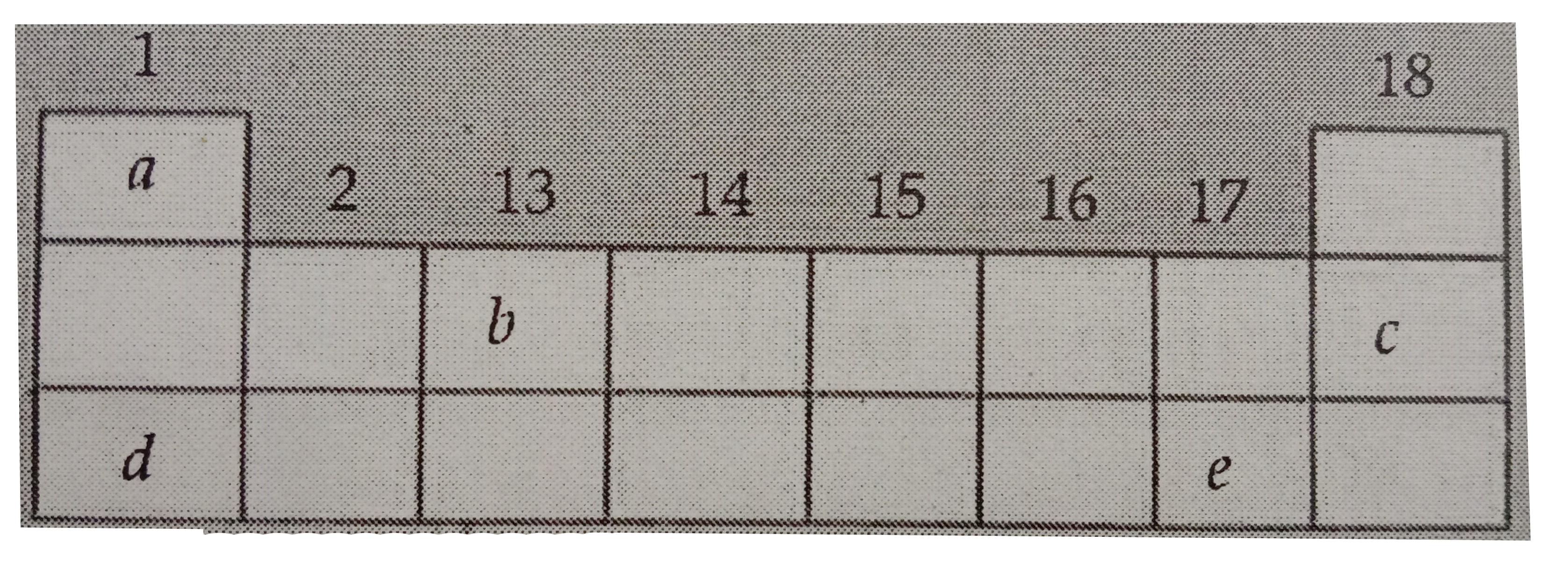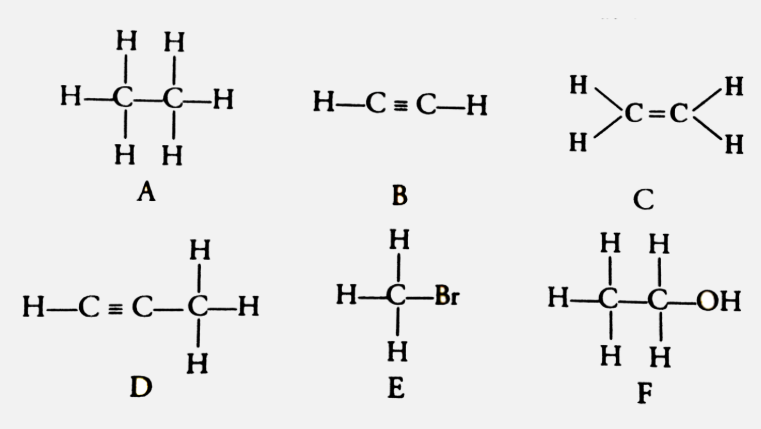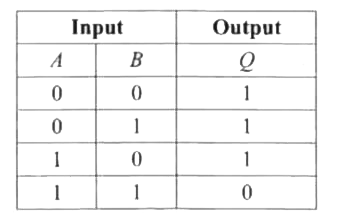In the following diagram for the first three periods of the periodic table, five elements have been represented by the letters a,b,c,d and e (which are not their chemical symbols):

(i) Select the letter which represents a halogen.
(ii) Select the letter which represents a noble gas.
(iii) What type of bond is formed between a and b?
(iv) What type of bond is formed between c and b?
(v) Which element will form a divalent anion?
Step by step video & image solution for In the following diagram for the first three periods of the periodic table, five elements have been represented by the letters a,b,c,d and e (which are not their chemical symbols): (i) Select the letter which represents a halogen. (ii) Select the letter which represents a noble gas. (iii) What type of bond is formed between a and b? (iv) What type of bond is formed between c and b? (v) Which element will form a divalent anion? by Chemistry experts to help you in doubts & scoring excellent marks in Class 10 exams.
Updated on:21/07/2023Similar Questions
The following diagram shows a part of the periodic table containing first there periods in which five elements have been represented by the letters a,b,c,d and e (which are not their chemical symbols):

(i) Select the letter which represents an alkali metal.
(ii) Select the letter which represents a noble gas.
(iii) Select the letter which represents a halogen.
(iv) What type of bond is formed between a and e?
(v) What type of bond is formed between d and e?
View SolutionA to F are the structural formulae of some organic compound

(i) give the letter which represent the family.
(ii) Give the letters which donot represent hydrocarbons.
(iii) How can 'C' be converted into 'A'?
View Solution
Knowledge Check
The letter D in carbohydrates represent its_________.
Aits direct synthesisBits dextrorotationCits mutarotationDits configurationThe letter 'D' in carbohydrates represents
AIts direct synthesisBits dextrorotationCits mutarotationDits configurationThe following truth table represents which type of gate?
 ANOTBANDCORDNAND
ANOTBANDCORDNAND
The following diagram shows a part of the periodic table in which the elements are arranged according to their atomic numbers. ( The letters given here are not the chemical symbols of the elements):
(i) Which elements has a bigger atom , a or f ?
(ii) Which element has a higer valency, K or o ?
(iii) Which element is more metallic, i or K ?
(iv) Which element is more non - metallic , d or g ?
(v) Select a letter which represents a non-metal of valency 2.
(vi) Select a letter which represents a noble gas.

View SolutionAn element A has an atomic number of 6. Another element B has 17 electrons in its one neutral atom.
(a) In which groups of the periodic table would you expect to find these elements?
(b) What type of bond is formed between A and B?
(c) Suggest a formula of the compound formed between A and B.
View SolutionIf d represents the bond length, then select the correct relation.
View SolutionWhich one of the following belongs to representative group of elements in the periodic table?
View SolutionWhich one of the following belongs to representative group of elements in the periodic table?
View Solution
